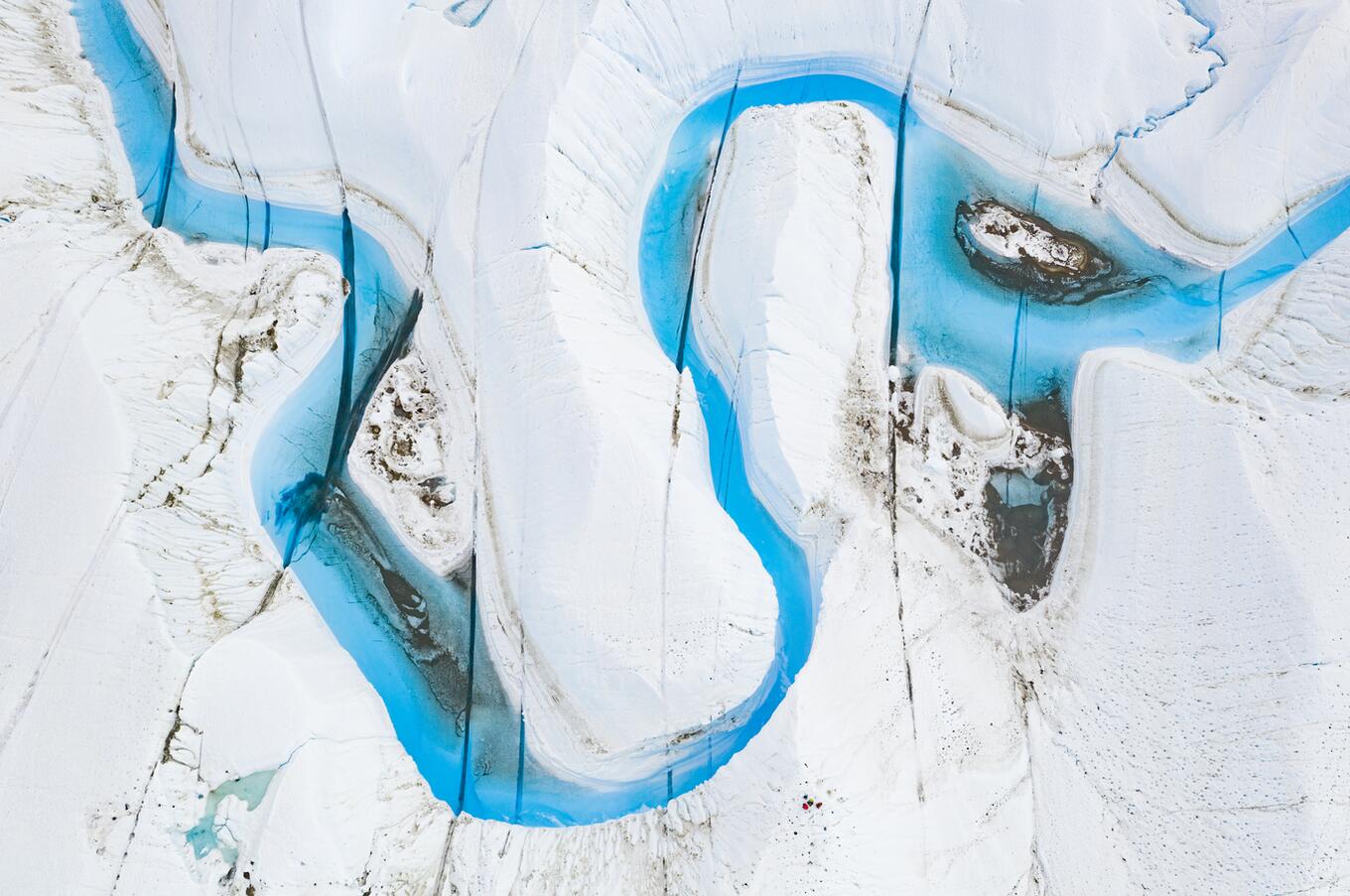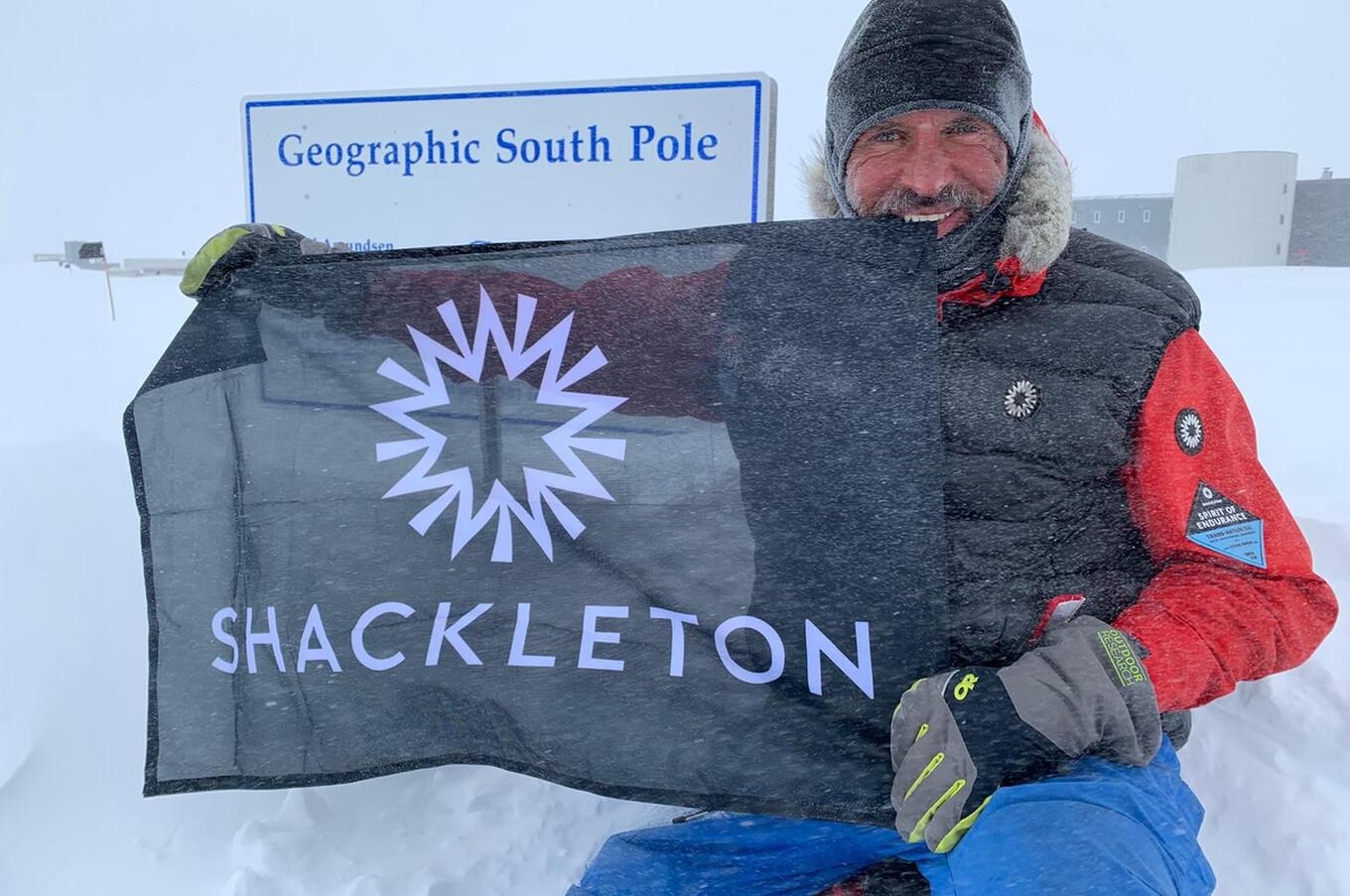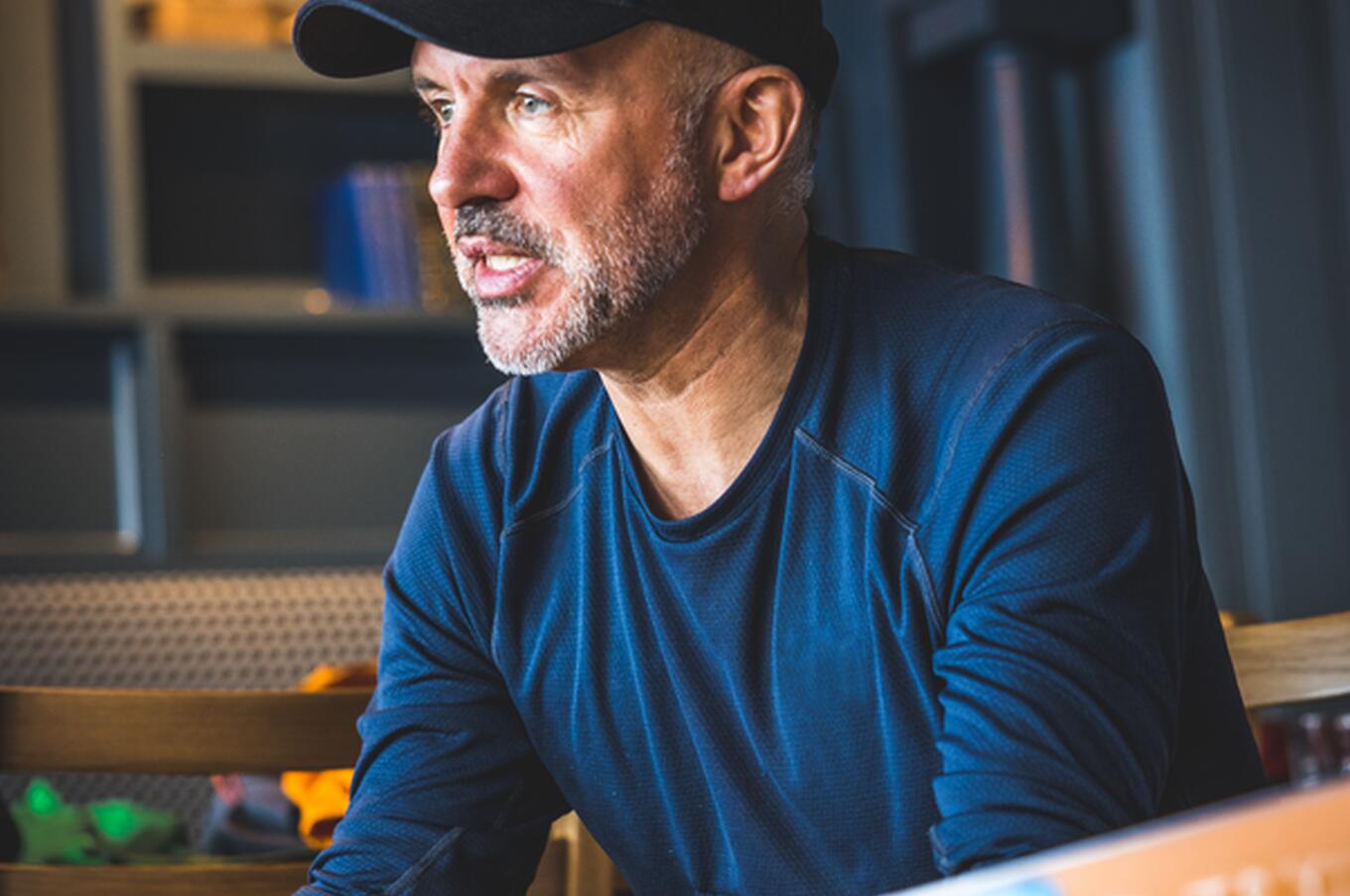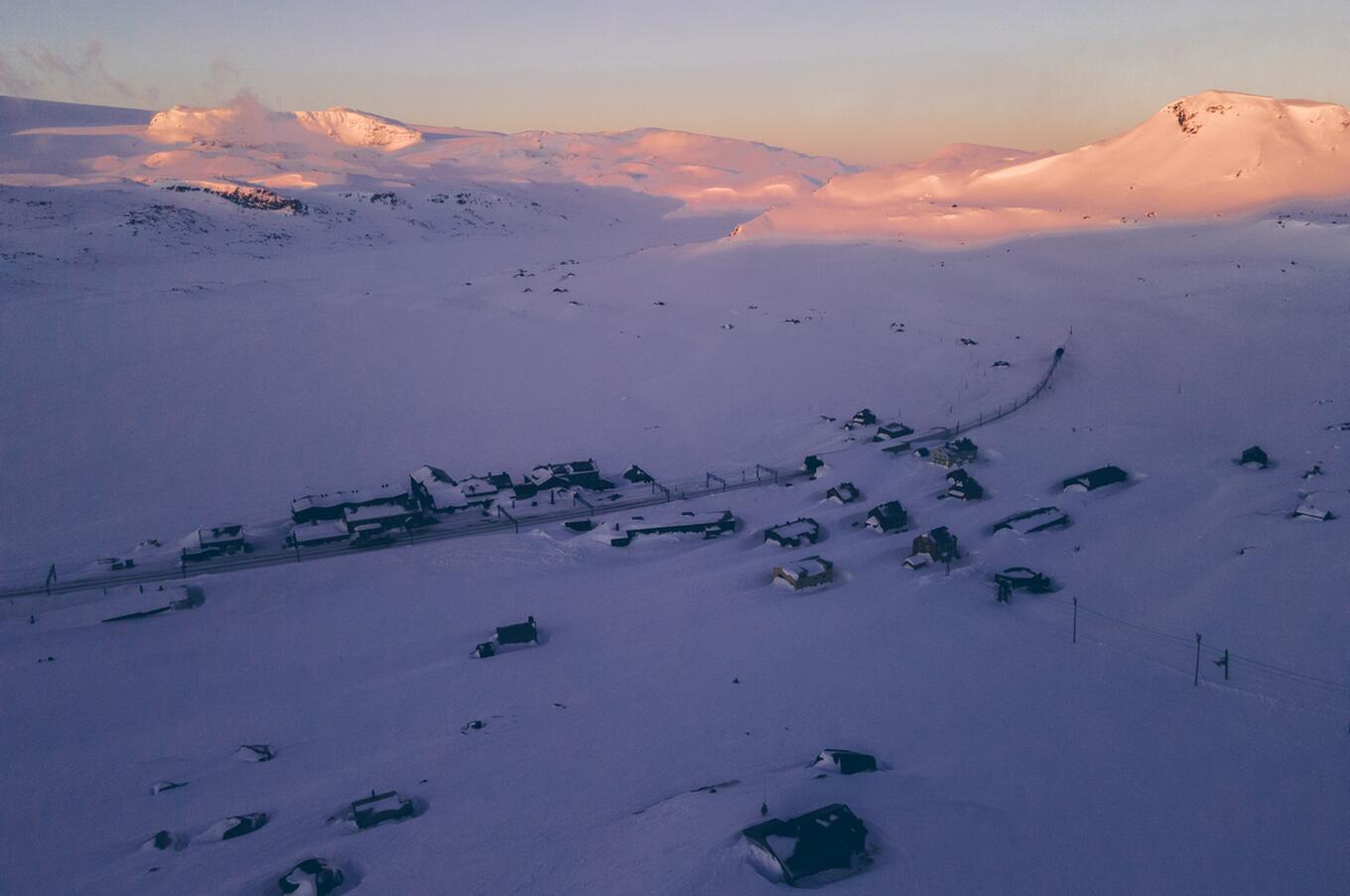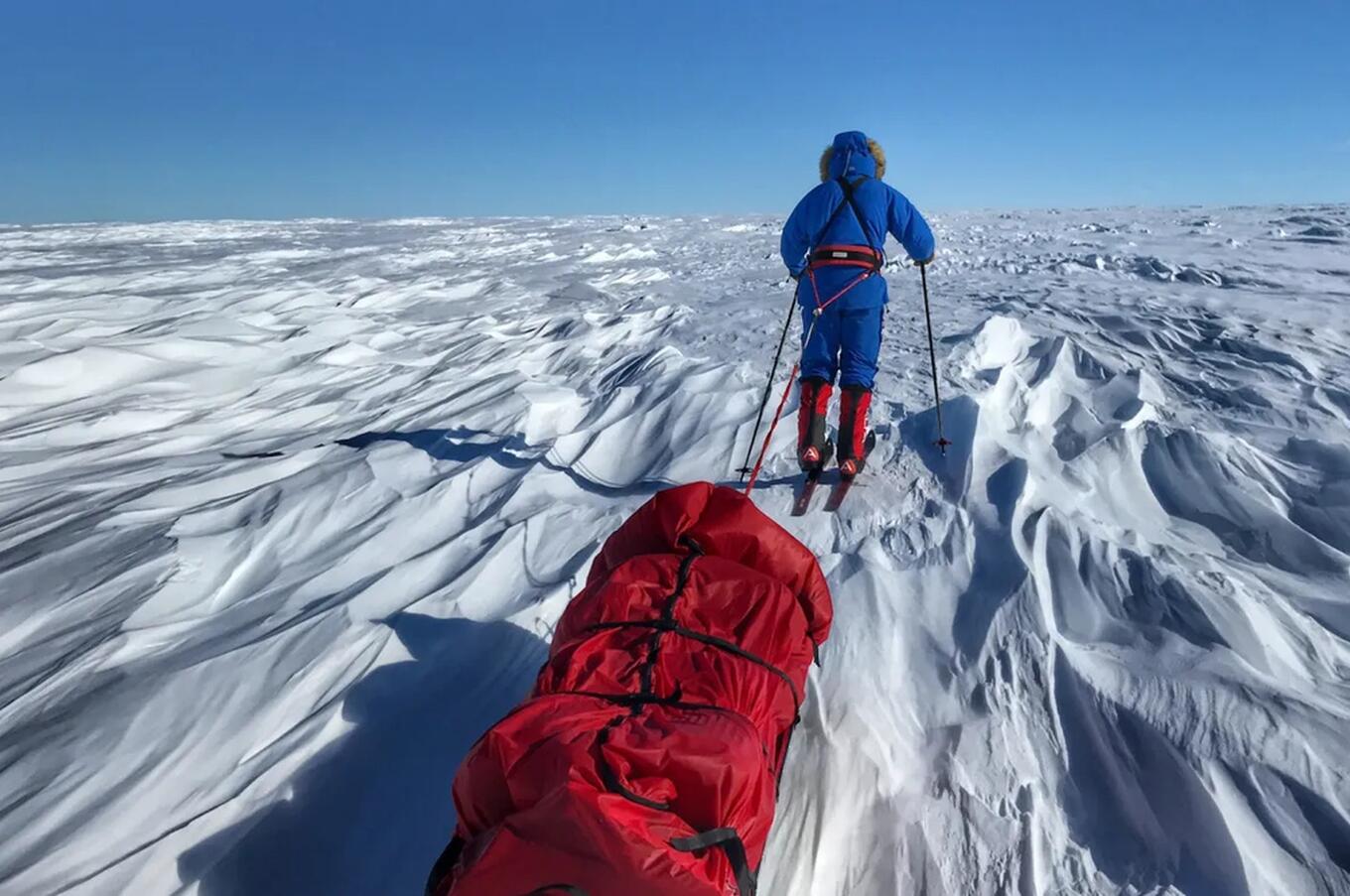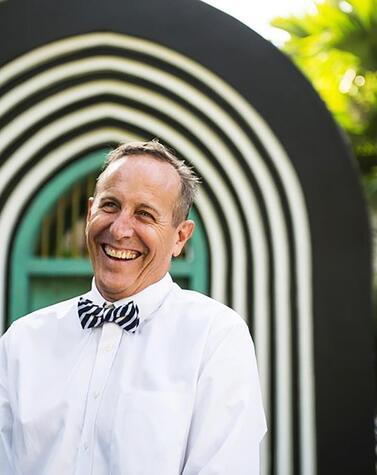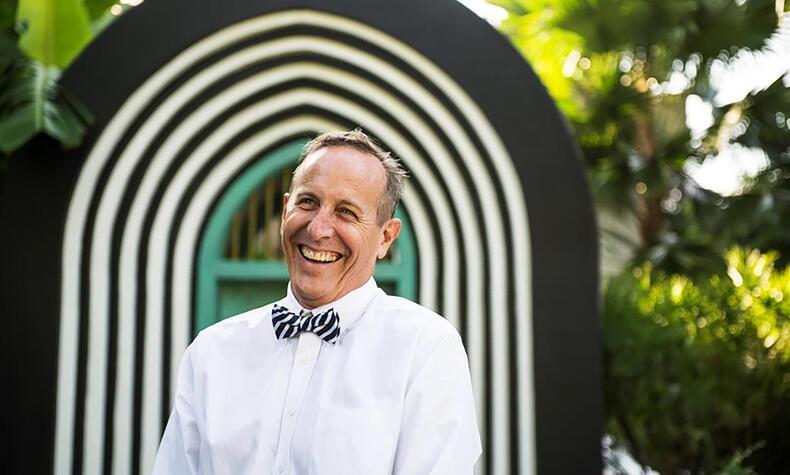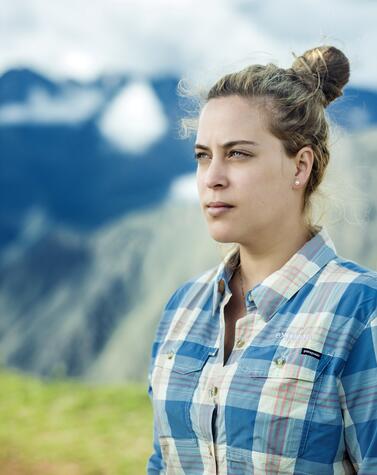Louis Rudd: The Inner Compass, an extraordinary journey through polar lands
Inspired since childhood by the tales of the great polar explorers, Louis Rudd is the only man to have crossed Antarctica twice from coast to coast, leading teams and facing the most uninhabitable continent on the planet alone. His story is one of a dreamer who found his true home in snow and ice, proving that mental and physical strength can conquer the impossible.
Who is Louis Rudd?
I grew up in Lincolnshire, on the east coast of England. Honestly, it was a pretty flat and boring place. There wasn't much to do in terms of adventures around that area.
There was a pivotal moment in my life. When I was 11 years old, I had just started high school and got into a bit of trouble. I was sent to see the principal and was going to get physical punishment. At that time (early 1980s), caning (a corporal punishment with a cane) was still practiced. I remember sitting in the waiting room outside his office, terrified because I had never been through anything like that before. While I was waiting, I saw a small shelf with books next to it. Without paying much attention, I picked one up at random to distract myself. It turned out to be a book about Captain Scott in Antarctica.
I had never heard of Antarctica or polar explorers. As I read, I discovered the story of Scott and his team: their incredible attempt to be the first to reach the South Pole and their tragic return, where they all lost their lives. I was completely fascinated. I couldn't believe it was a true story. I thought: My God, this really happened!
That was a turning point. I decided I wanted to be a polar explorer. As I kept waiting, I told myself that I would have to be tougher to tackle that dream. I thought, "If I want to be an explorer, I have to be strong and resilient. I have to train myself from now on." I went from being a scared kid to someone determined. I took the punishment and left with a new mission: to read everything I could about Antarctica and its explorers. I became passionate about the stories of Shackleton, Amundsen, and Scott, and for the rest of my youth, I never stopped dreaming about that place.
How did your path to polar exploration begin?
At the age of 16, I made a crucial decision: to join the Royal Marines. I had heard that they were doing winter training in Norway, and that seemed like a logical opportunity to get closer to my dream, since at that age, there was no "polar explorer" job.
I went straight in from school, it was a huge challenge. Training for the Royal Marines is nine months, and it was a culture shock, especially at that age. However, after completing my training, I had the opportunity to train at the Arctic Warfare Academy in Norway. It was there that I fell in love with the poles. I realized that I deeply enjoyed those extreme challenges.
At the age of 22, already with six years of military experience, I decided to try out for the SAS (Special Air Service) Special Forces. I was one of the youngest to do so. Normally, candidates have a lot more experience before attempting this course, but I had already accumulated enough time in the Marines. I passed the course on the first try, after six months of intensive training. I served in the SAS for more than 25 years, operating in polar environments, jungles, and deserts, learning about different environments and how to survive in them.
Do you think an explorer is born or made?
I think it's a combination of both. I was born with something inside me that craved exploration and adventure. However, I have also honed my skills over time. During my years in the military and my expeditions, I have learned to plan, prepare, and overcome extreme challenges.
I think anyone can be trained and prepared to face great challenges, but some people are certainly born with that explorer spirit and the values necessary to face the unknown.
What is the difference between exploration and adventure?
For me, there is a big difference. I usually refer to myself as an adventurer rather than an explorer. The real explorers were people like Captain Scott, Shackleton, or Neil Armstrong: those who were the first to reach unknown places, like the South Pole, the Moon, or the top of Everest.
In my case, I have not gone to unexplored areas; the regions I have visited in Antarctica have already been mapped. What I do is rather adventurous: unpublished routes or extreme challenges in known areas. But for me, exploration also includes a personal component: discovering what I am capable of, both physically and mentally.
How did your military career influence your life as an explorer?
The military experience has been key. Being part of the Royal Marines and SAS Special Forces taught me a lot about mental resilience and physical strength. The physical training was extremely rigorous. For example, the nine-month course to join the Royal Marines was extremely tough, especially as a 16-year-old. So was the six-month SAS course, which pushed me to the limits of my physical capabilities and showed me what I was really capable of.
The Army taught me that when you think you're exhausted, you're usually only using 40% of your physical capacity. The remaining 60% you unlock with your mental toughness. That skill has been key in my expeditions, allowing me to overcome challenges that others, without that experience, might consider insurmountable.
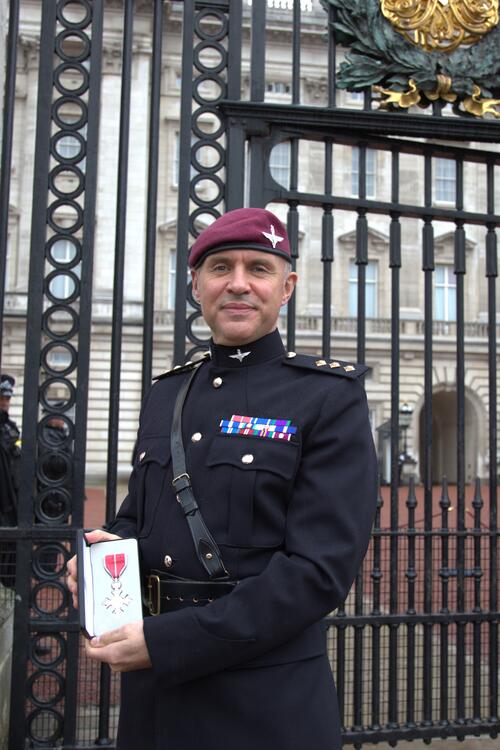
How do you manage the physical and logistical needs during a months-long expedition?
When you are completely isolated in Antarctica, you can't depend on anyone else. Everything you need to survive, from food to equipment, you carry with you on your sled, which can weigh up to 145 kilos at the start. Most of that weight is food: dehydrated food packets designed to provide about 6,000 calories a day. I also carry fuel to melt snow into water, since you can't carry water with you in those conditions.
The weight decreases as you consume food and fuel, which makes the trip slightly easier over time. However, the first few days are brutal: you drag a sled that weighs more than two people combined, moving slowly on a seemingly endless icy surface.
The body adapts to these extreme conditions, but only if it is properly trained. And it is in those moments, when you are completely alone, exhausted, and facing the white immensity, that mental and physical preparation is really put to the test.
How did you endure the extreme temperatures in Antarctica?
During the crossing, temperatures ranged from -20°C on the coasts to -50°C inland. However, that's just the beginning. If it's windy, the wind chill can drop much lower, making conditions incredibly challenging. Also, as you move further into the continent, you are climbing up to the polar plateau, which reaches an altitude of almost 3,000 meters. What many people don't know is that the South Pole sits on a sheet of ice more than four kilometers thick. This means you are constantly on an upward slope, and with even lower temperatures as you ascend.
The key to surviving these conditions lies in experience and properly managing your body. For example, it is critical to avoid sweating. If your base clothing gets wet, you risk hypothermia quickly. This requires being very attentive to how your body reacts: the moment you notice you are generating too much heat, you should unzip or ventilate to avoid sweating.
On the move, I wore only a merino wool base layer and a special coat to block the wind. When I stopped, I would quickly put on a down jacket to conserve the heat I had built up while moving. I also learned to do everything with gloves on, from operating the navigator to using the satellite phone, to avoid the risk of frostbite on my fingers. Even the smallest tasks, such as adjusting a rope or handling equipment, had to be done with protected hands.
This knowledge comes from years of experience in extreme climates, both in Norway with the Royal Marines and on my previous expeditions. It all comes down to preparation and discipline to implement these practices every time. In Antarctica, any mistake, no matter how small, can quickly become a life-or-death situation.
What inspired you to undertake your expeditions to the South Pole?
I have made four major expeditions in Antarctica, but only one was solo. I have been the only man to cross the Antarctic land mass twice, from an inland coast to the South Pole and out the other side of the continent. The first time I led a team of five young army soldiers on the Spear 17 expedition, which covered 1,800 kilometers.
The inspiration for my solo trek came from a close friend, Henry Worsley, who attempted a similar expedition in 2016 but lost his life due to medical issues. I decided to complete his dream in his honor and managed to complete that traverse in 2018-2019 without resupply.
How did you prepare yourself physically to face those extreme conditions?
Physical preparation for a polar expedition is something that starts long before you set foot in the snow. In my case, each of my major treks required at least two years of intensive planning and training. The key is not only to build strength and endurance, but also to condition the body and mind to endure weeks, even months, in adverse conditions.
One of the most effective workouts I do is tire dragging. It consists of taking a large tire, such as those from a Land Rover, which weighs about 20 kilos, and hooking it to a harness similar to the one I will use to pull a sled in Antarctica. Then, I go out on forest roads and drag the tire for hours. This simulates the physical exertion of pulling a heavy sled over snow.
This exercise is much more than just a physical workout; it is also mental preparation. Dragging a tire for hours is tedious and exhausting, but it perfectly reflects the monotony and constant effort of a polar expedition. During my training sessions, I often visualize the conditions I will face in Antarctica: the cold, the wind, the lack of comfort. This helps me to mentally adapt to "being uncomfortable" and to accept the harshness of the experience.
In addition to dragging tires, I integrate other training such as running, strength training at the gym, mountain biking, and skiing sessions. As the expedition date approaches, I intensify the practices to better simulate real conditions. For example, I spend several consecutive days dragging the tire and sleeping outdoors, braving the cold and consuming the same dehydrated food I will take on the expedition. This not only trains my body, but also helps me prepare my stomach to digest the specific foods I need to get 6,000 calories a day in Antarctica.
A mantra I follow is, "Train hard, live the expedition easier." While in reality, the expedition is never easy, this approach ensures that I have done everything I can to be ready.
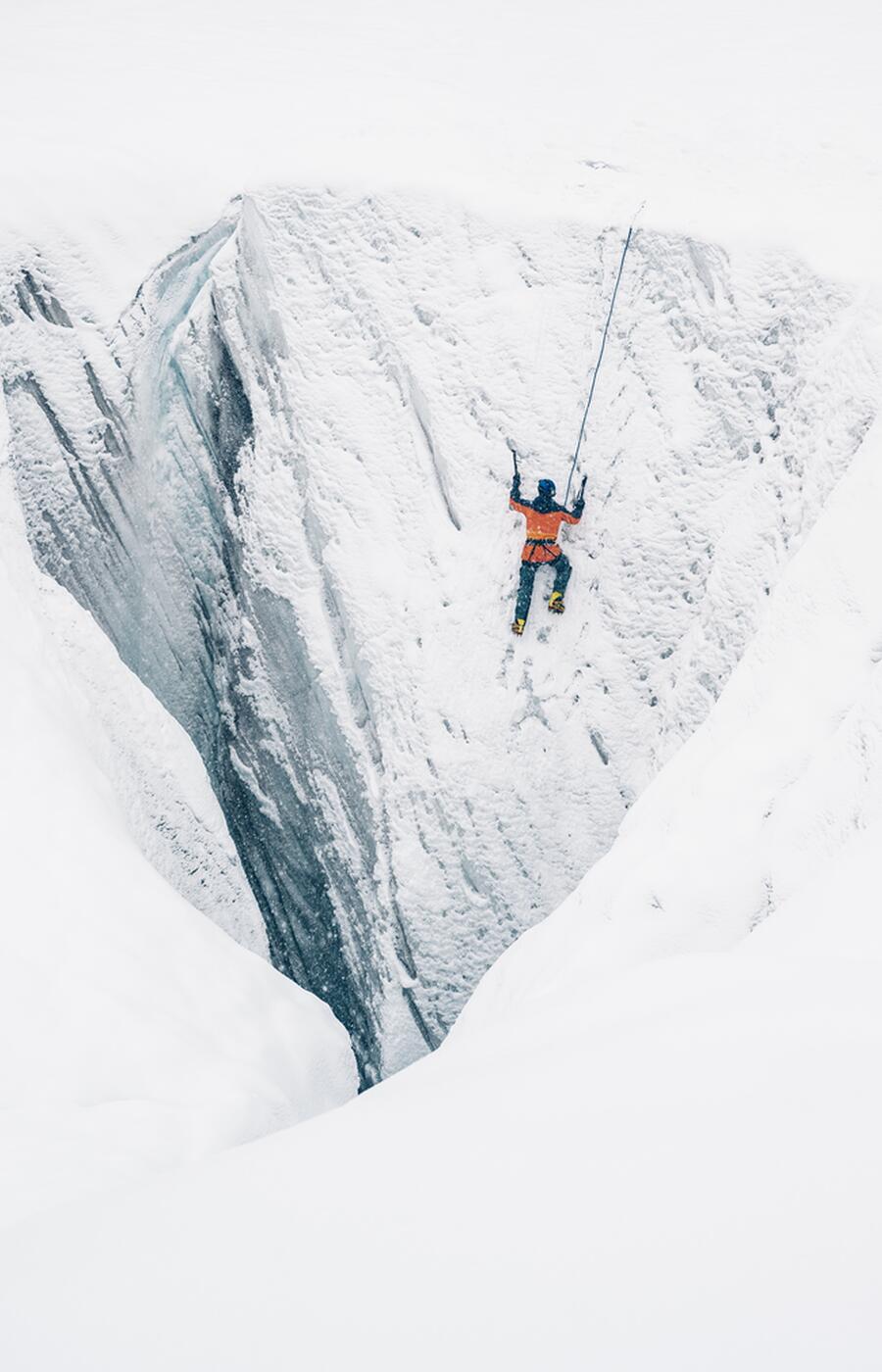
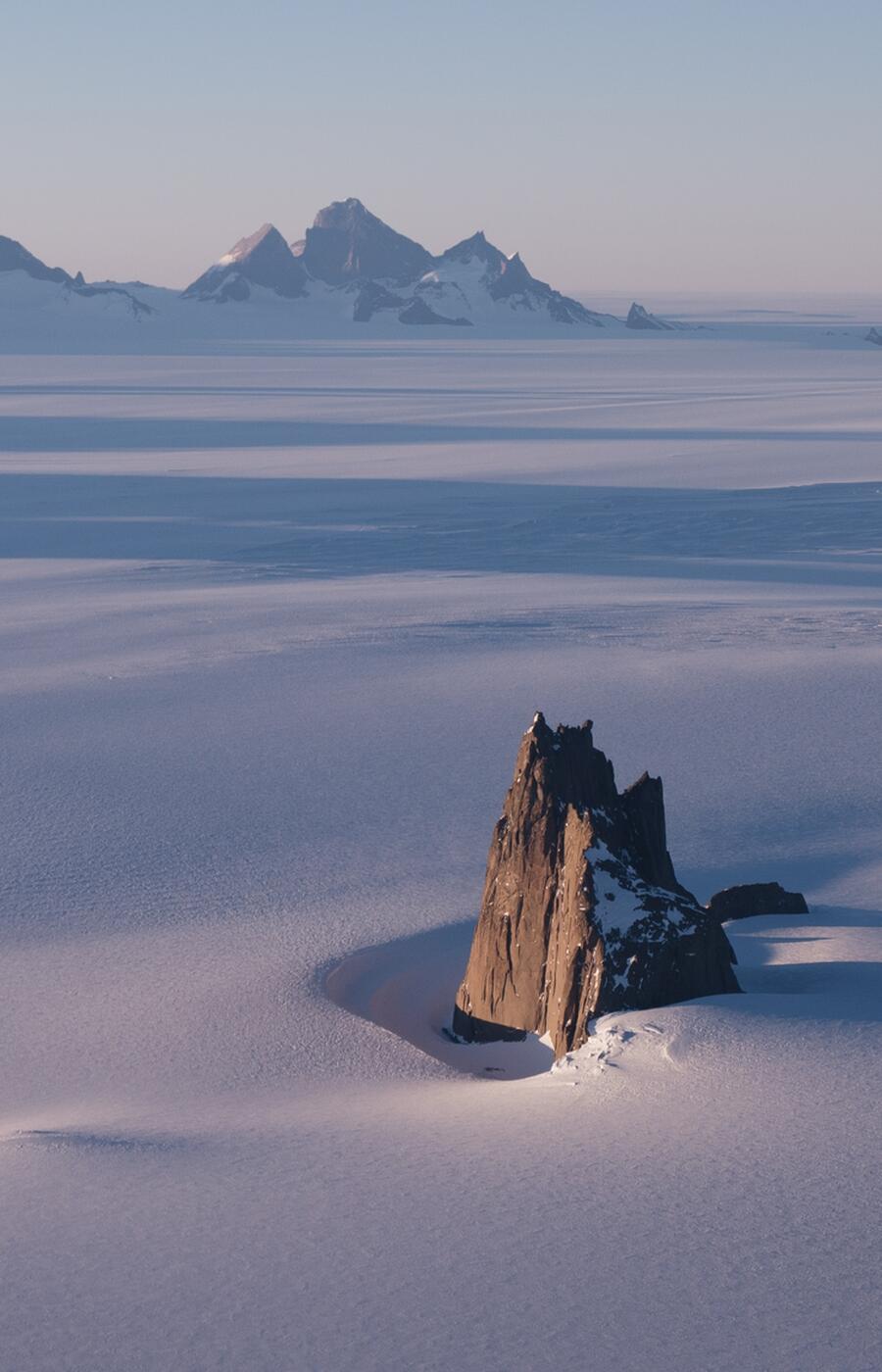
How did you deal with the extreme conditions and the challenges of solitude during your expeditions?
Antarctica is an environment of overwhelming beauty, but also incredibly hostile. Temperatures can drop as low as -50°C in the interior, and that's not counting the wind, which can make the wind chill even more extreme. These conditions require experience, preparation, and a solid mental capacity to face them day after day.
One of the most difficult moments I experienced occurred in a whiteout. This phenomenon occurs when clouds completely cover the sun, eliminating any visual reference. It's as if you were inside a ping-pong ball: you can't see the horizon, the sky, or the ground beneath your feet. It's a disorienting experience that tests your senses and your mental endurance.
I remember one day in particular, when I was weeks into my solo trek to the South Pole. I had been skiing in a whiteout all day, relying solely on my compass and the ends of my skis to stay on course. Suddenly, unseen, I fell into a hole in the ice created by the wind, known as a wind scoop. It was a drop of about two and a half meters, but at that instant, I thought I was falling into a much deeper crevasse, which is one of the greatest fears of any polar explorer.
The impact was brutal. My ski split in two, and my sled, which at that point still weighed over 100 kilos, fell behind me, hitting me in the back. I hit my ribs, cut my lip, and was stunned for a few minutes. Sitting there in the middle of nowhere, I thought, "Is this too dangerous? Should I stop?" It was a critical moment in my journey. I thought about my wife and three children at home, and the thought of risking my life like that made me hesitate.
But in those difficult moments, I always go back to the reasons that got me there. On that expedition, I was raising funds for charity and honoring the memory of my friend Henry Worsley. Thinking about those goals gave me the strength to keep going. I repaired my equipment as best I could and continued my journey, with an even greater respect for the magnitude of Antarctica and its challenges.
Have you seen the effects of climate change in the polar regions?
Yes, I have witnessed them firsthand. I spend a lot of time in Greenland and Antarctica, and the changes are increasingly evident. For example, in Greenland, I have seen glaciers receding significantly and large blocks of ice breaking off the shelves. In Antarctica, I have observed similar phenomena, such as the collapse of large blocks of ice in recent years, something that used to be extremely rare.
Climate change is also affecting expeditions in the Arctic. For the past five years, the North Pole expedition season, which normally occurs in April, has been cancelled due to a lack of sea ice. It's a direct impact of global warming: the Arctic Ocean no longer freezes in the same way, and this is endangering not only exploration but the entire polar ecosystem.
It is an issue that affects not only those of us who work in these regions but everyone on the planet. The polar regions act as global climate regulators, and their deterioration has an impact on the entire Earth's climate system. That is why, in my most recent expeditions, I have tried to include educational and climate change awareness components. It is critical that we do all we can to protect these unique environments before the changes become irreversible.
How has technology changed exploration?
Technology has radically changed the way we explore. Many people think that modern expeditions are easier because of today's modern equipment, but I disagree. What technology has done is allow us to take on challenges that would have been impossible before.
For example, Shackleton and Scott could not have imagined solo voyages without resupply because of the limitations of their time. They had neither the technical equipment nor the knowledge about nutrition that we have now. Today, with lighter skis, better fabrics for clothing, and high-quality dehydrated food, we can undertake more ambitious expeditions. But that doesn't mean they are any less demanding.
Technology has also allowed us to improve safety. We now carry satellite phones, GPS, and tracking systems, providing a level of peace of mind for both ourselves and our teams back home. However, these advances do not eliminate the fundamental challenges: it is still necessary to have solid physical and mental preparation to face the extreme.
On the other hand, I believe that technology has democratized exploration to some extent. More people can now participate in expeditions thanks to access to modern equipment and knowledge. But at the same time, we must maintain respect for the explorers who came before us. Technology is no replacement for the bravery and endurance they demonstrated.
What advice would you give to those who want to take on a big challenge?
My main advice is to build your experience incrementally. Don't try to jump straight into an extreme challenge like skiing to the South Pole without first building up the necessary skills and confidence. Start with smaller adventures that take you out of your comfort zone by 10 to 15%. Do this in a controlled and safe manner, and with each step, push your limits.
For example, if your goal is the South Pole, start by training in more accessible cold climates, such as Norway or the Alps. Then try longer and more difficult expeditions, such as crossing Greenland. This will not only prepare you physically, but also give you the mental tools to cope with isolation and extreme conditions.
Another tip is to never underestimate the importance of preparation. During an expedition, it is not only about physical endurance; it also involves impeccable logistics, from equipment to food. And finally, be clear about why you're doing it. In the toughest moments, that motivation will be what drives you to keep going.

